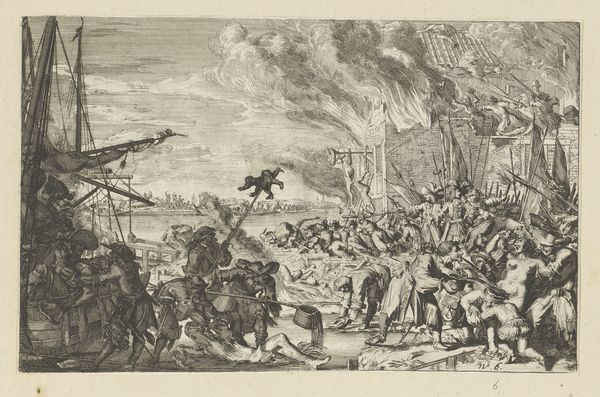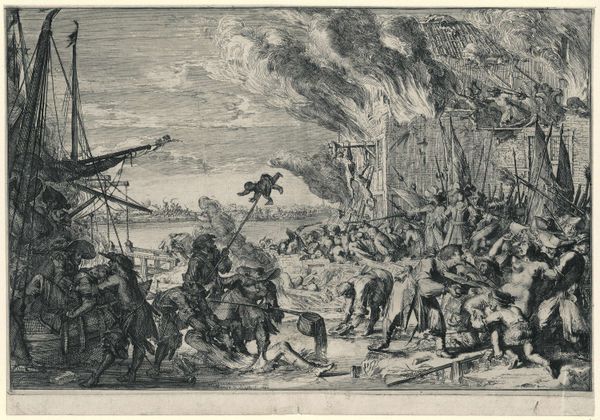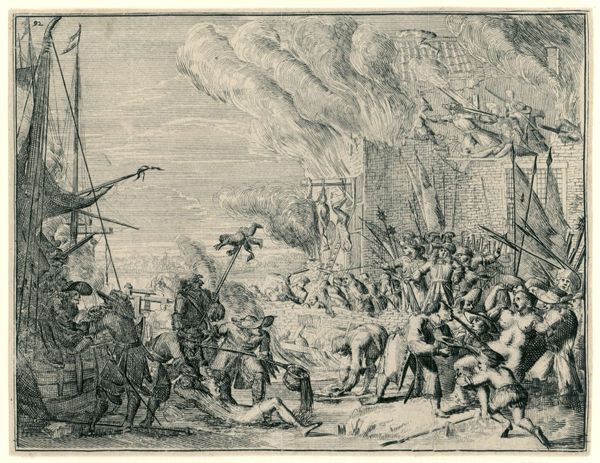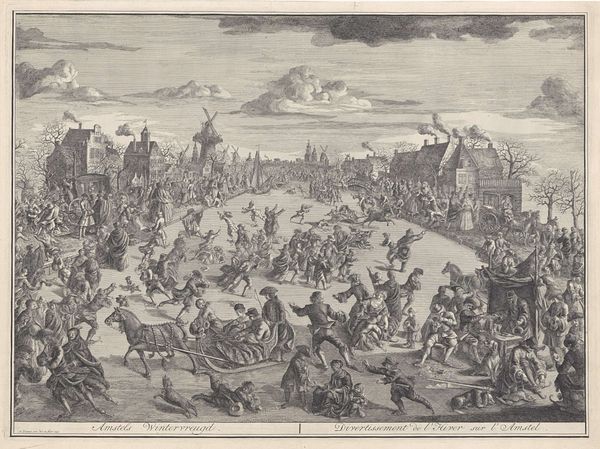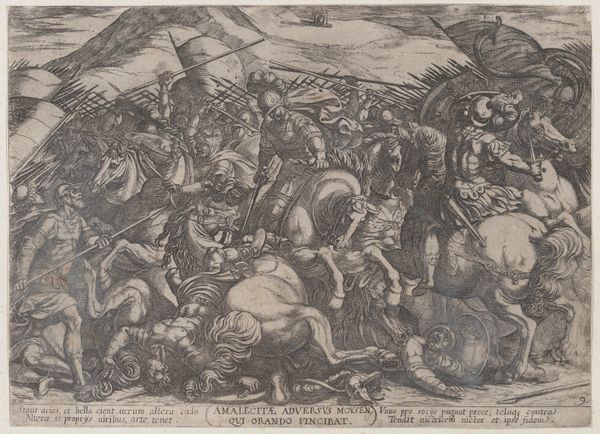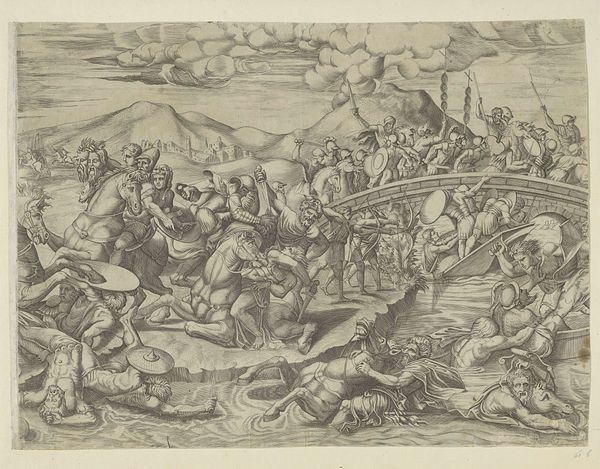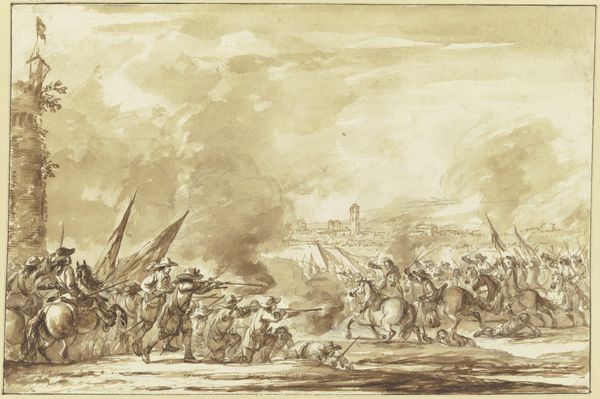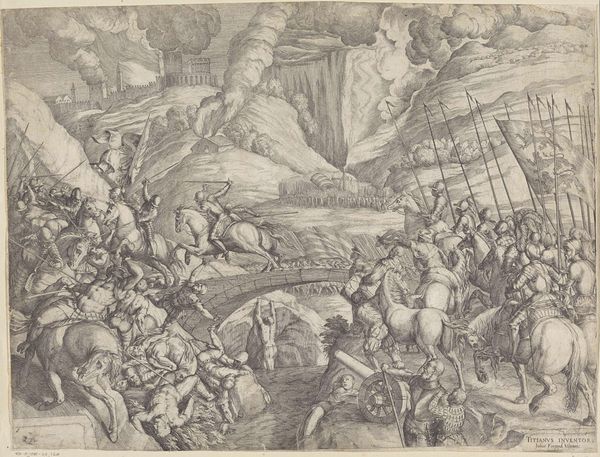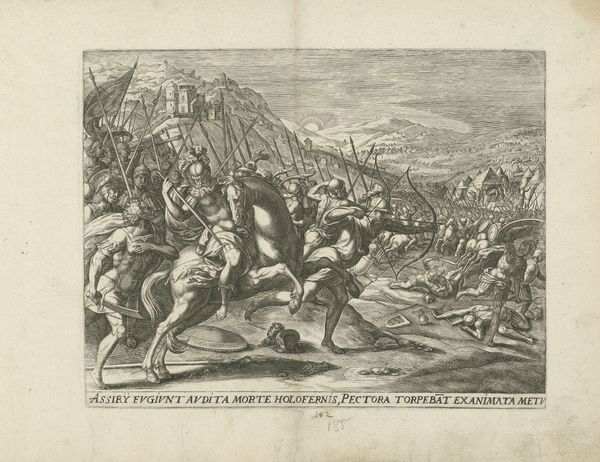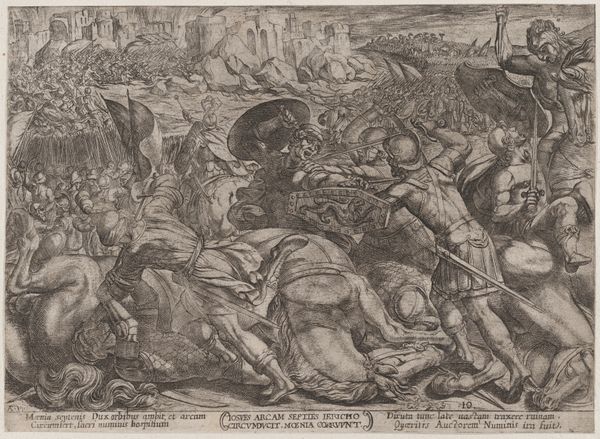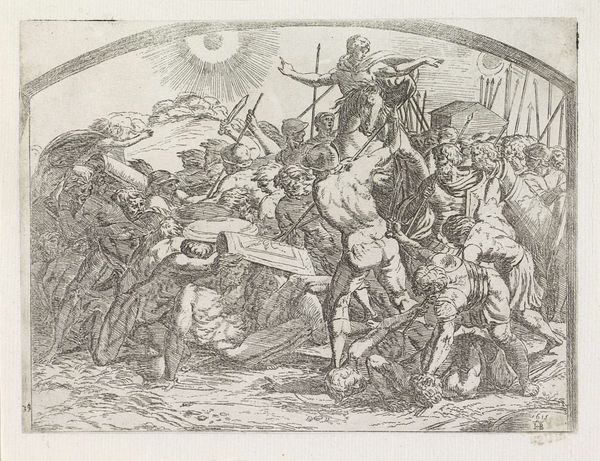
Advis Fidelle Aux Vertables Hollandois . . . 1673
0:00
0:00
drawing, print, etching, engraving
#
drawing
#
ink drawing
#
weapon
#
baroque
# print
#
etching
#
book
#
men
#
cityscape
#
history-painting
#
engraving
Dimensions: Overall: 9 1/16 x 7 1/2 x 1 9/16 in. (23 x 19 x 4 cm)
Copyright: Public Domain
Curator: This etching and engraving by Abraham de Wicquefort is titled "Advis Fidelle Aux Vertables Hollandois . . .," dating back to 1673. It's quite a scene depicting war and perhaps the ravages of political conflict, now residing at The Met. Editor: My first impression is chaotic, absolutely chaotic. A city burns in the background, bodies litter the foreground, all rendered in this very precise, almost obsessively detailed style. It’s overwhelming. Curator: It’s intended to be. It represents a very specific moment and sentiment during a turbulent period in Dutch history. We must read into the symbolism here: The title suggests a fidelity to true Dutch identity amid conflict. How are those themes represented materially? Editor: Look at the way the scene is built, how lines accumulate to create volume and texture. There's a clear attention to detail in the clothing, the weaponry, and the city's architectural structures. All these lines emphasize the tangible labor involved, even in a print. The materials used and depicted serve almost as documents of a specific point in history. Curator: And that history is inherently violent. Notice how bodies are displayed so callously, with no regard to life, reflecting, I suspect, broader issues of class and political power during that time, as ordinary lives were discarded like garbage in service of powerful rulers and countries. Editor: It also reflects a period when the printed image itself became a commodity, a medium to both inform and inflame public opinion. The scale of destruction seems deliberately magnified, meant to impact the viewer emotionally and perhaps politically. Curator: Absolutely. Its intended viewers needed something impactful to stir up sentiments, or perhaps incite fear and distrust in some external others. Looking closer, even now, stirs uncomfortable sentiments on the costs and materials of human conflict, when weapons and ideologies combine. Editor: And yet the detail in each element — the ships, the city aflame, even the rendering of individual bodies — suggests not just propaganda, but also a keen understanding of the material world being depicted. It makes us reflect upon how this visual documentation contributes to constructing memory and identity, right? Curator: Indeed. It speaks to how the convergence of labor, war, and national sentiment materializes in such potent—and disturbing—ways. Editor: A grim, but truly insightful commentary on conflict and power through image and material.
Comments
No comments
Be the first to comment and join the conversation on the ultimate creative platform.
